Kileche (Kleicha) are traditional Assyrian holiday cookies that are usually baked for Easter and Christmas. They come in three varieties: Date, walnut, and coconut, and go perfectly with a hot cup of samovar tea!
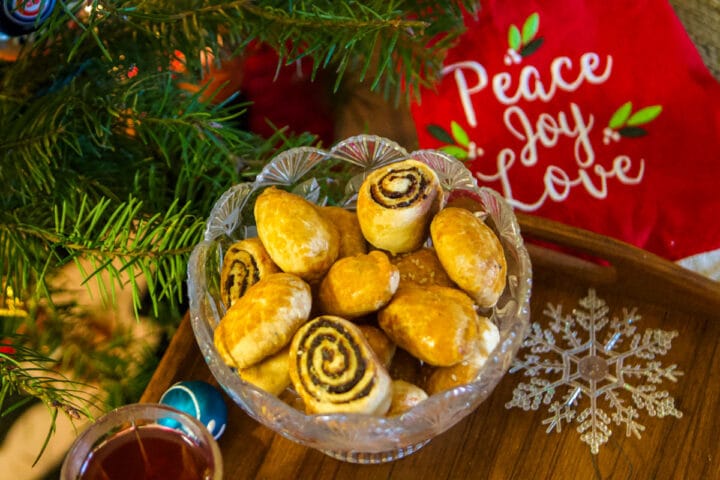
Although I call these "Assyrian Holiday cookies," the truth is they are not only prepared by Assyrians. In fact, they are Iraq's National Cookie; specifically, the date-filled variety.
They are called "kileche" in Assyrian and "kleicha" in Arabic. Assyrians usually make Kileche twice a year, for Christmas and Easter. But the fact that we don't make them very often only makes them more special and gives us another reason to look forward to the holidays!
Jump to:
😍 Why You'll Love This Recipe
- Making Kileche is a great way to celebrate our culture and pass it down to the next generation!
- This recipe includes a demonstration video which can be very helpful for visual learners.
- You will learn how to make a variety of Kleicha flavors including date, walnut, and coconut.
🛒 What Goes Into This Recipe
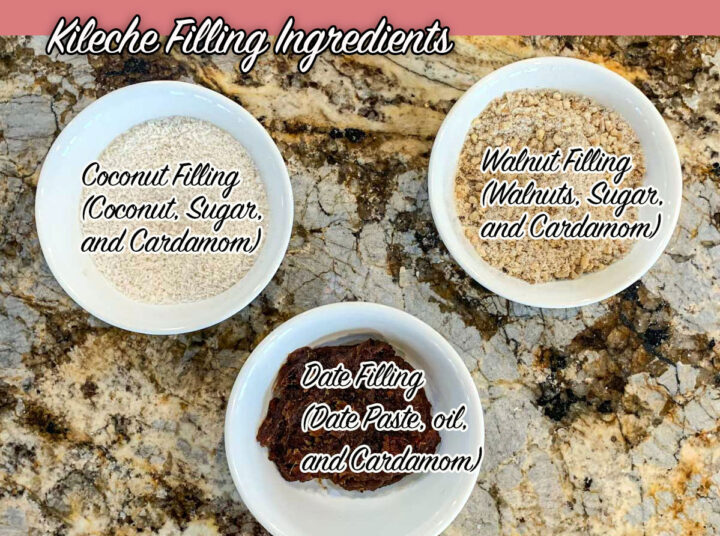
🔖 Ingredients & Substitutions
- Nigella Sativa Seeds — Nigella Sativa Seeds (affiliate link) add a peppery flavor and are sometimes used in baked goods in the Middle East. If you can't find nigella sativa seeds, you can use black sesame seeds instead. If you need to, you can leave them out.
- Coconut — Unsweetened desiccated coconut (affiliate link) is usually used in coconut Kileche. It has a very fine texture. Because it's unsweetened, sugar is usually mixed in to sweeten the filling. If you use sweetened coconut, you don't have to add sugar.
- Dates — Pre-packaged Date Paste (affiliate link) is usually used to make date Kileche, it's quick and convenient. However, you can make your own date paste using my 3 Ingredient Cardamom Date Paste recipe. If you do, just follow the recipe steps, no need to add anything else to it.
🥟 How to Make This Recipe
Prepare the Dough
Step 1: Mix the yeast into warm milk, then sprinkle with one tablespoon of sugar, mix, and set aside until foamy.
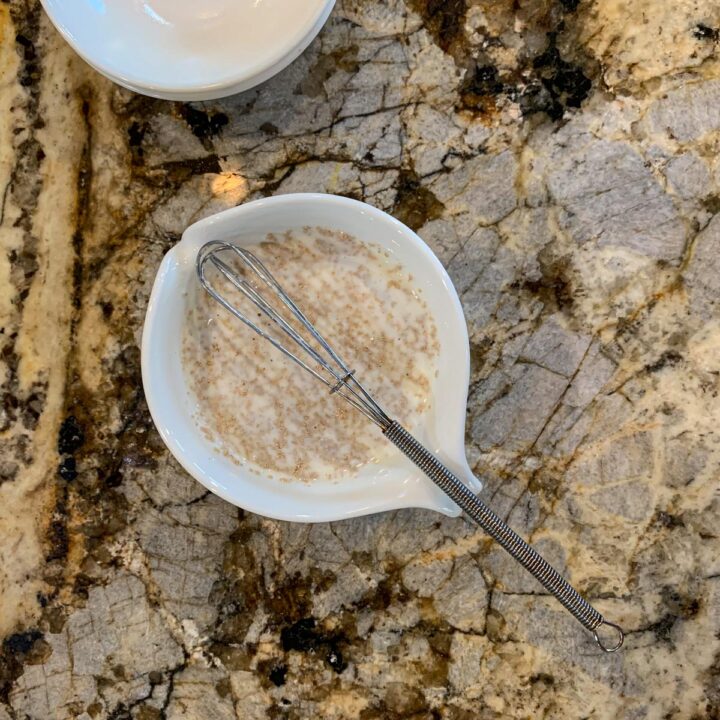
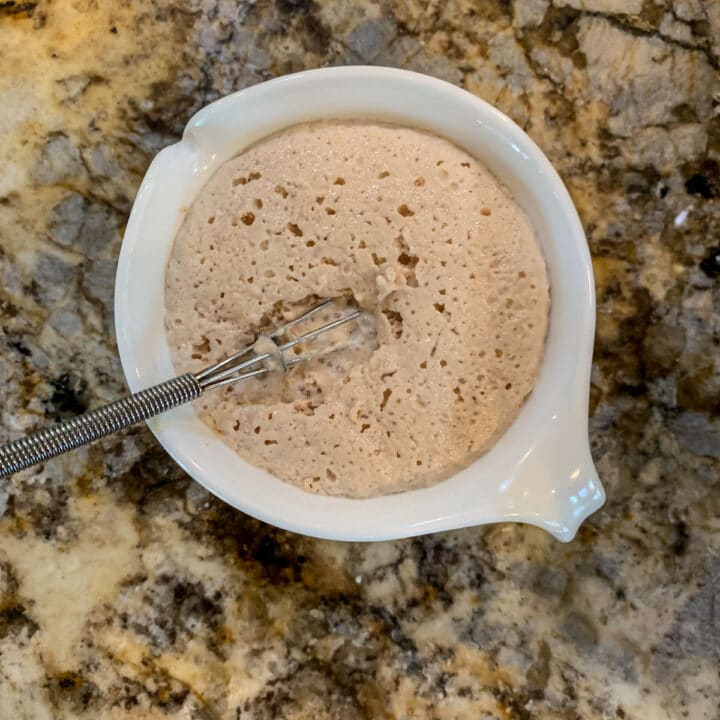
Step 2: Meanwhile, add flour into a large bowl and whisk in the remaining sugar, salt, Nigella Sativa seeds, and cardamom.
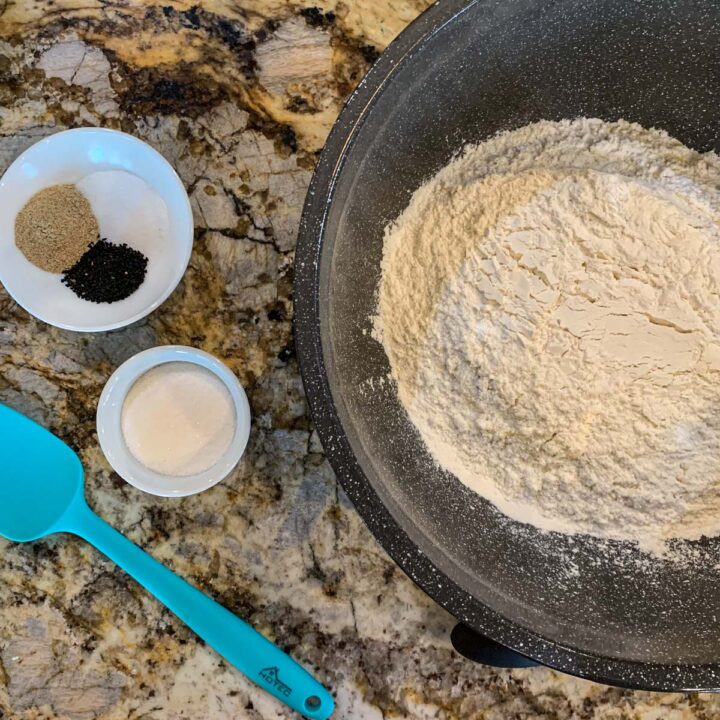
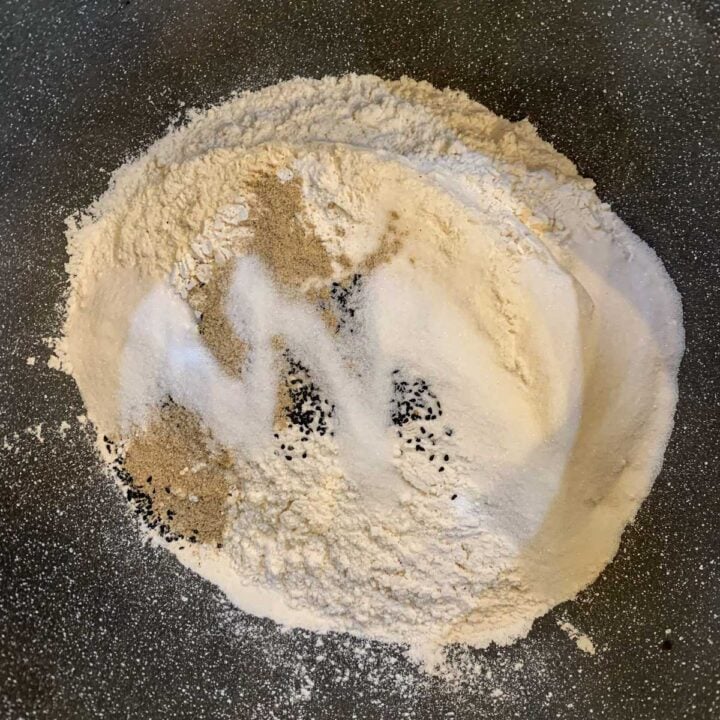
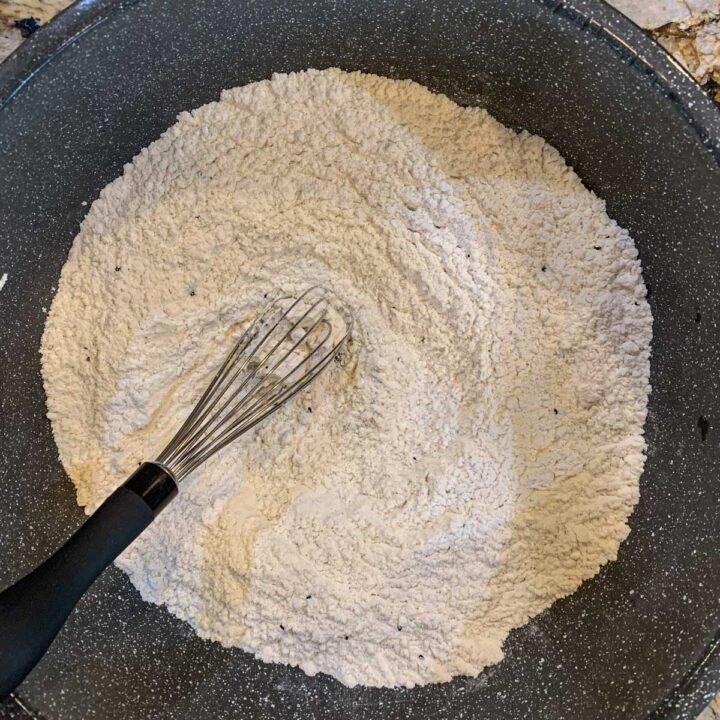
Step 3: Stir melted butter, yogurt, eggs, and milk-yeast mixture into the flour until crumbly. knead by hand, until the dough is soft and smooth. Score the dough with a Cross, cover it, and allow it to rest in a warm place for one hour.
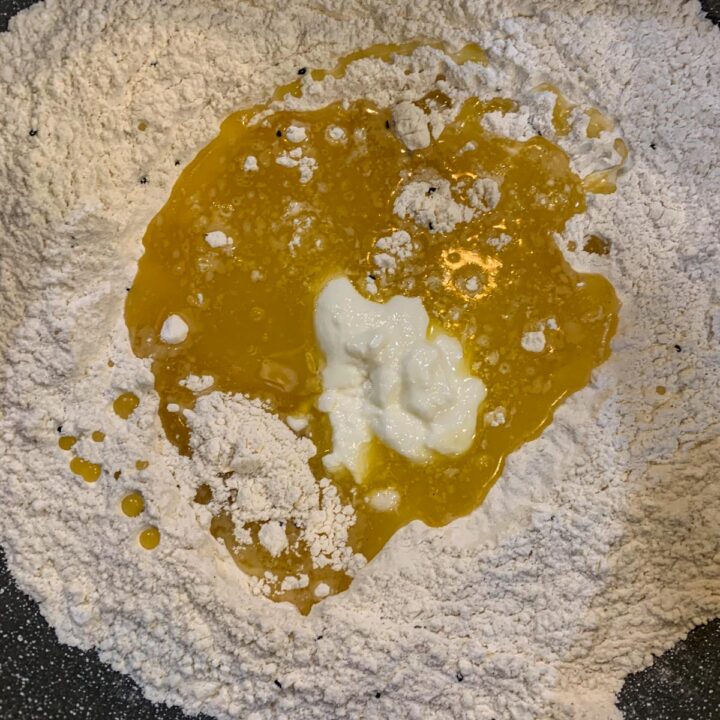
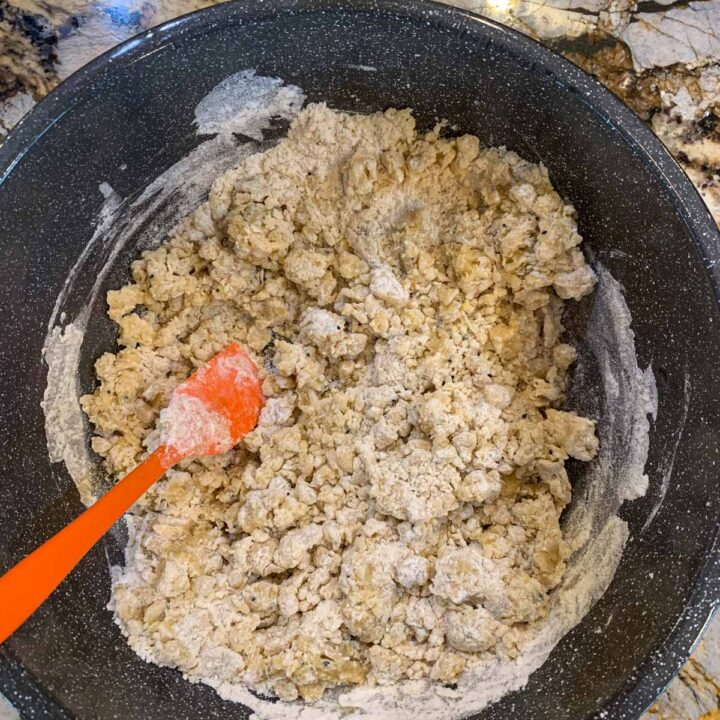
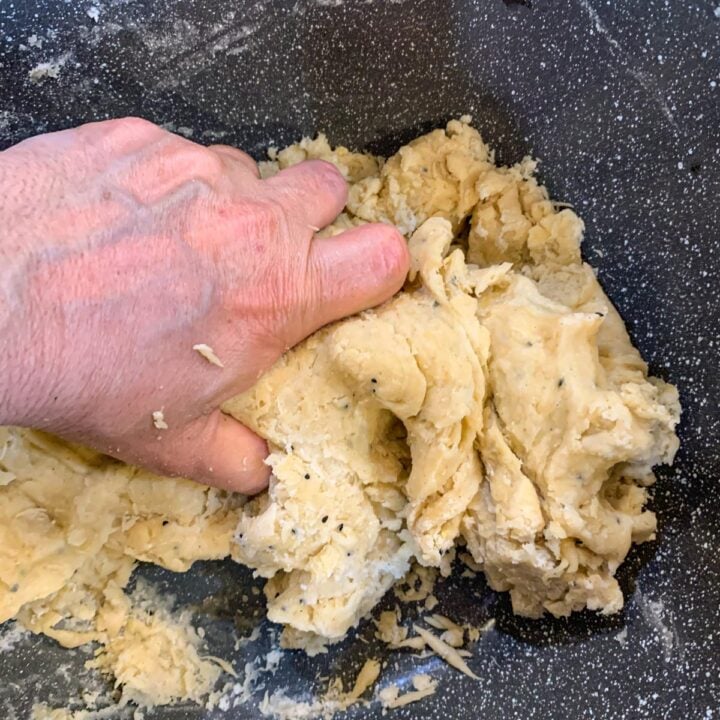
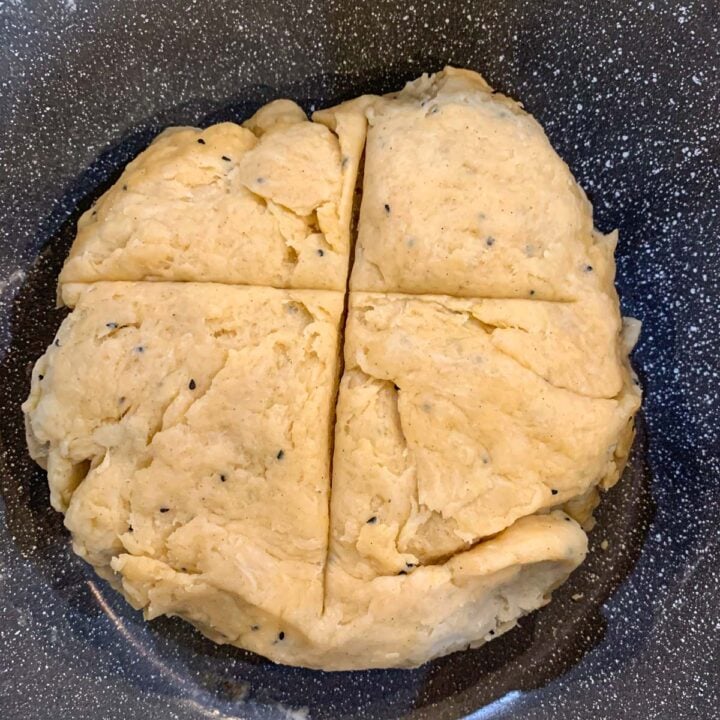
History Lesson: I once asked my mother why she and other Assyrians marked Kadeh and Kileche dough with a "cross." Mom explained that it was a way for the Assyrians to display their Christian faith when they were being persecuted and forced to convert to Islam during the Assyrian Genocide which took place in 1915 during WWI. The cross demonstrated that no matter what, their faith could not be taken from them.
Prepare the Fillings
Step 1: While the dough is resting, prepare the fillings. Mix the ground walnuts with the sugar and cardamom. Do the same with the coconut filling ingredients.
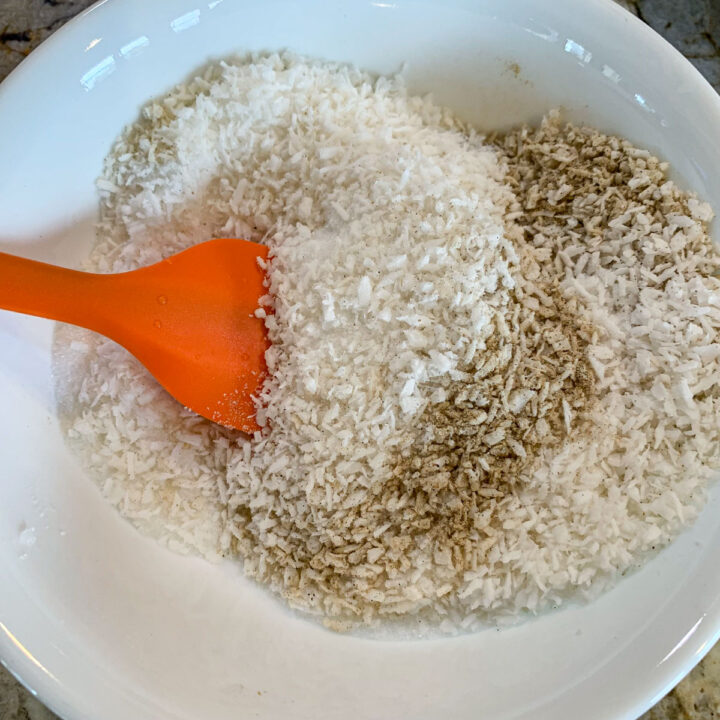
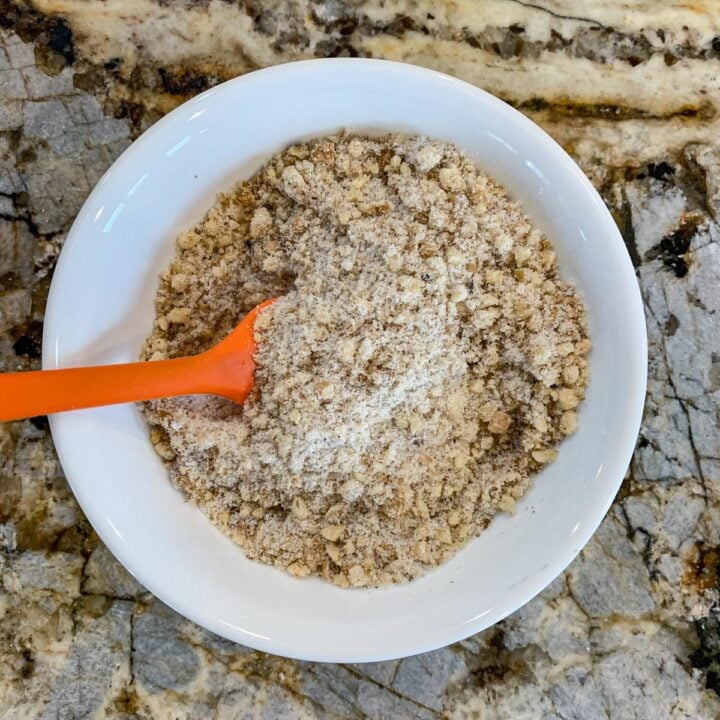
Pro Tip: The rose water helps the dry coconut to bind together, making it easier to work with. It also adds a classic rose flavor, but it is totally optional.
Step 2: To make the date filling, heat vegetable oil in a small saucepan. Add the date paste and sprinkle with cardamom. Stir and mix, over medium heat, until the date paste is toasted. Frying the dates really brings out their flavor!
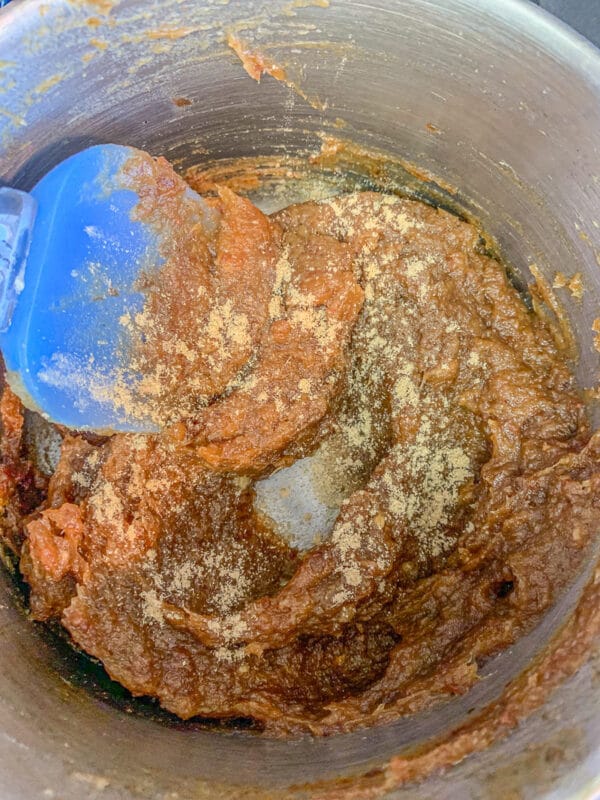
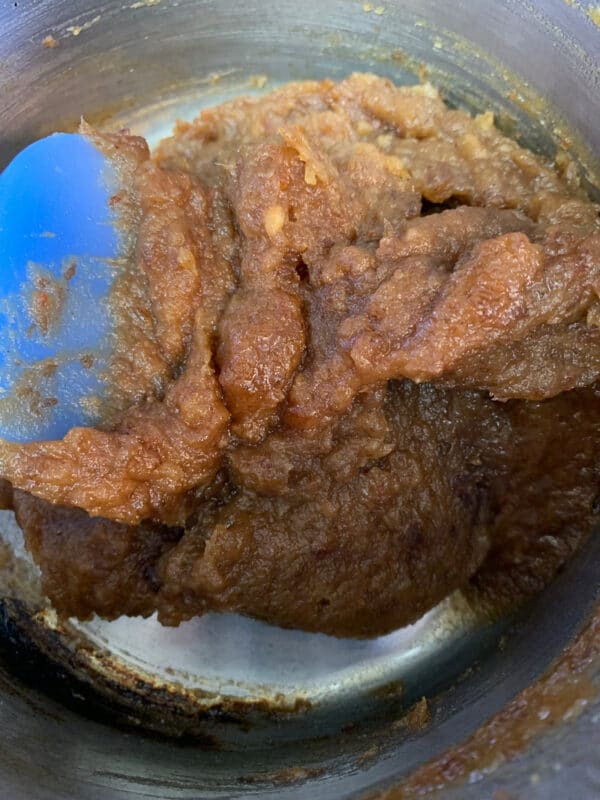
Kileche Assembly Instructions
Preheat oven to 350 degrees F.
Would you like to save this recipe?
Step 1: Divide the dough into 3 portions. One portion will be used for each filing. Any extra dough can be rolled into braids and wreaths and baked as is.
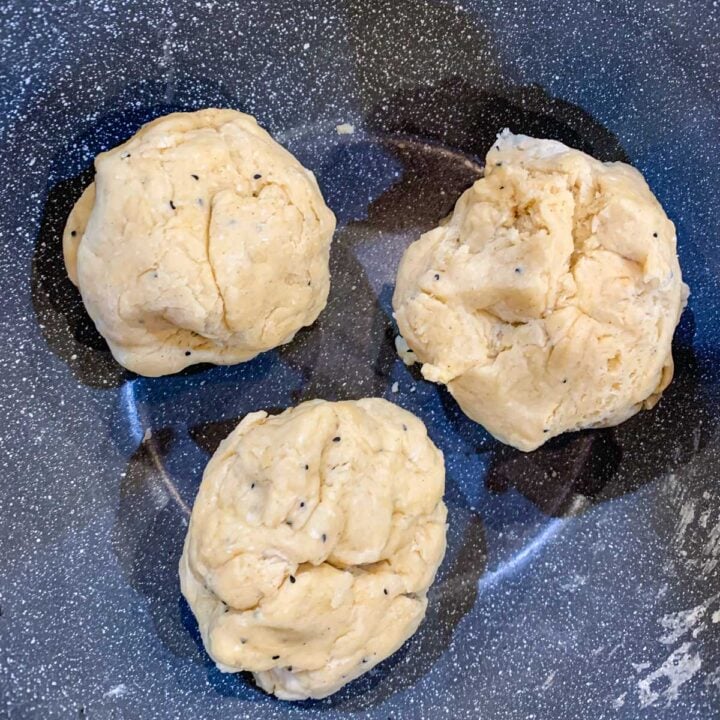
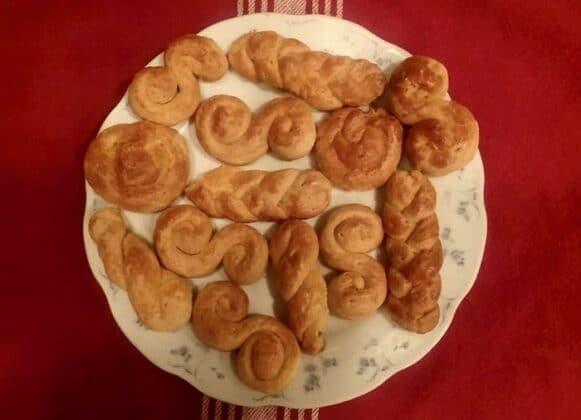
Step 2 | Walnut Kileche Instructions: Take a small portion of dough and roll it into a ball. Flatten using your thumbs and index fingers. Mold the dough into a bowl shape and fill it with a teaspoon or two of walnut filling. Fold the dough in half and press the edges together. Make small folds all around the edges. Continue until all of the dough or filling is used up. Place the cookies on a parchment-covered cookie sheet as you make them.
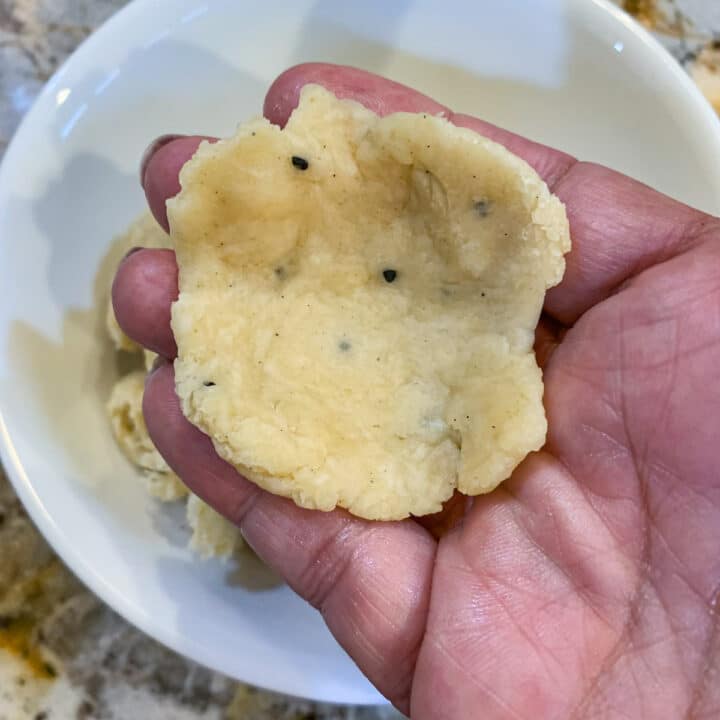
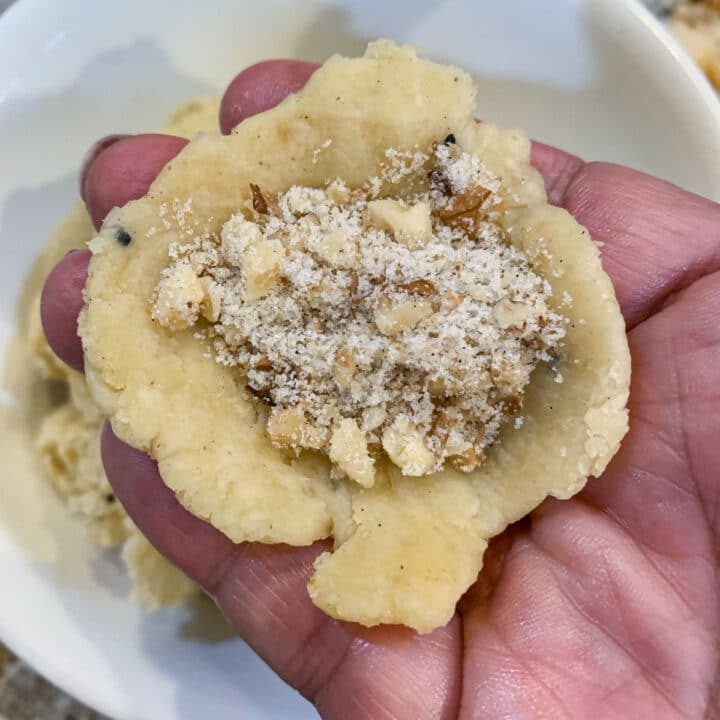
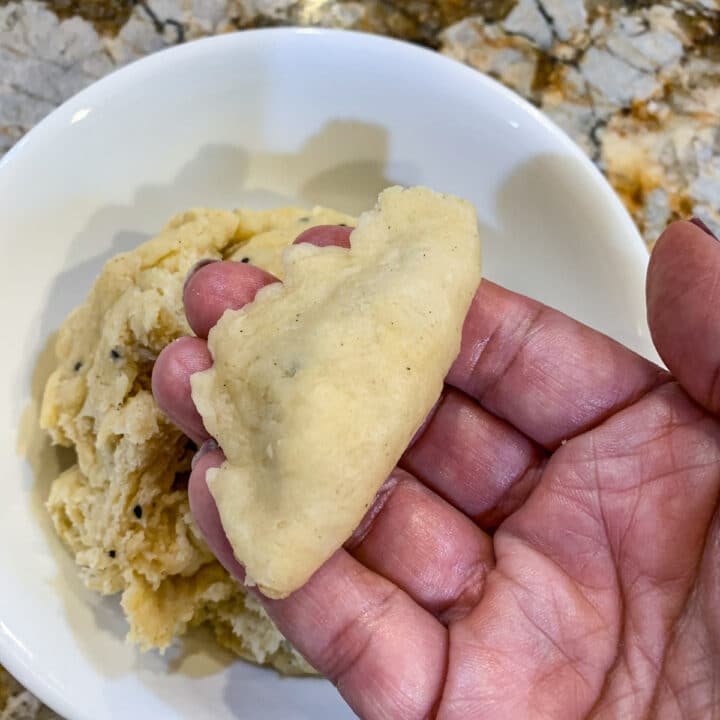
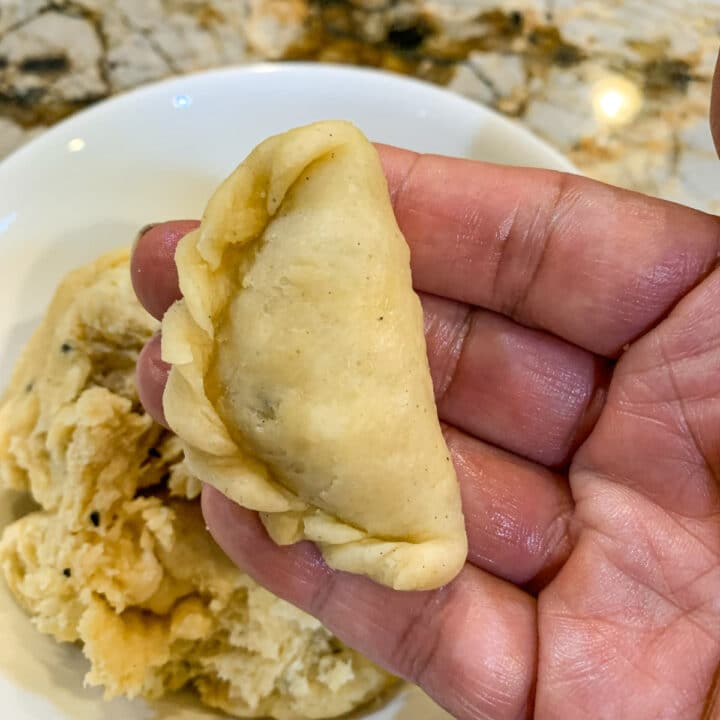
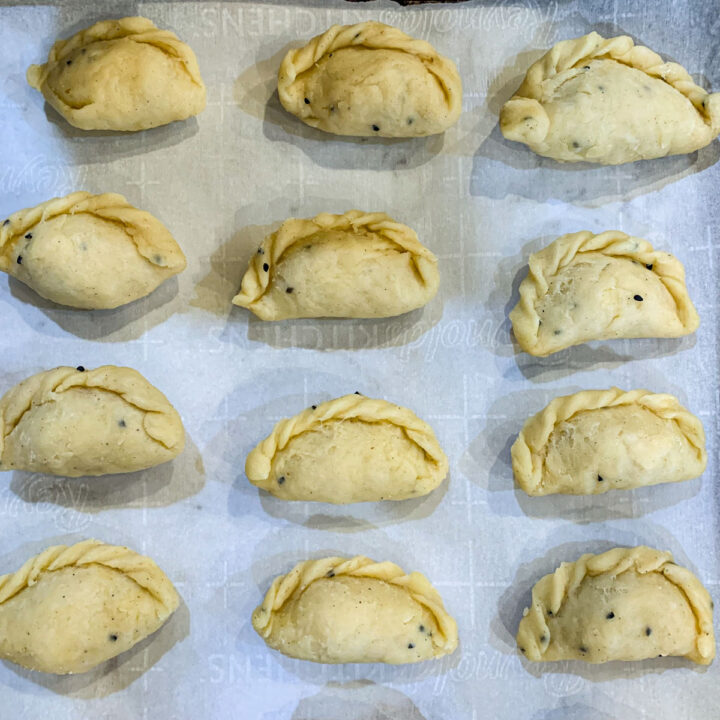
Step 3 | Prepare the Glaze: Whisk eggs and milk to make the glaze. Pierce Kileche a few times with a fork and brush generously with glaze. Bake for 30 minutes or until golden brown. Continue with the next filling.
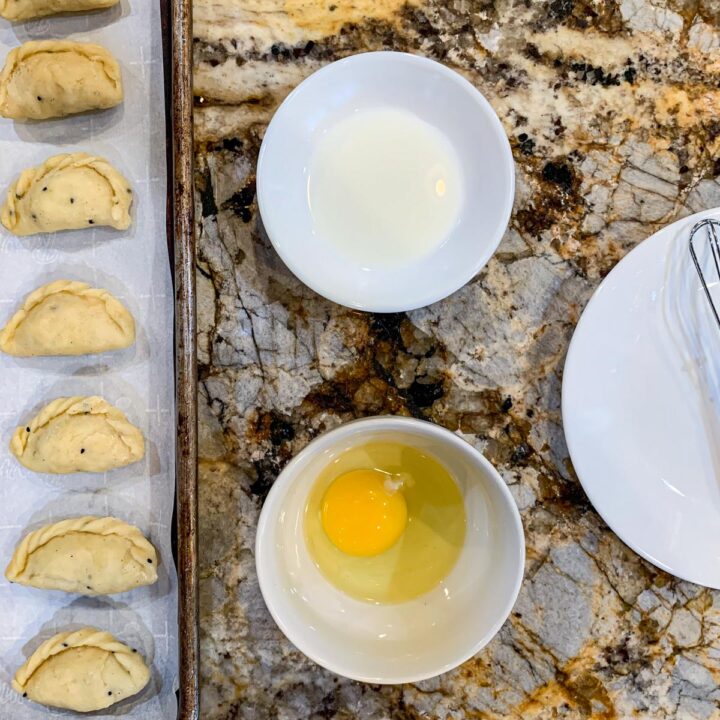
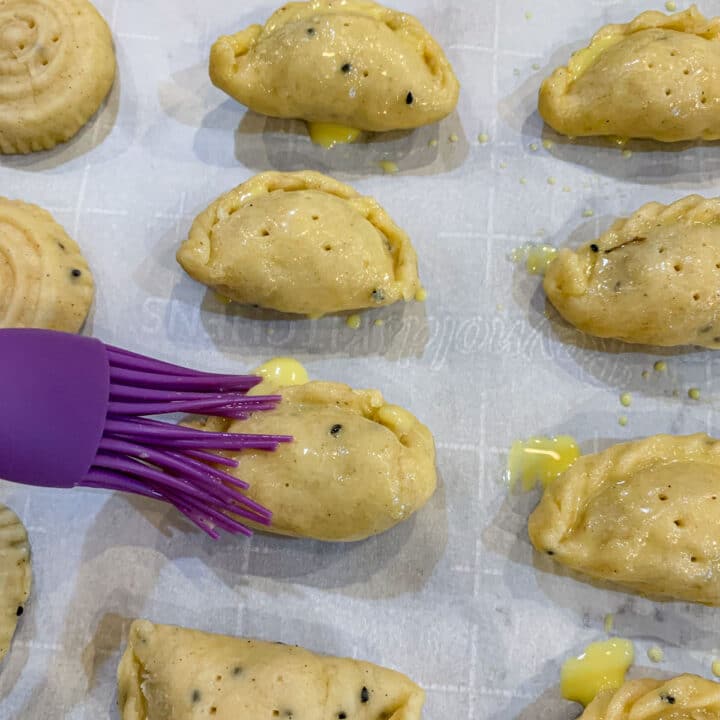
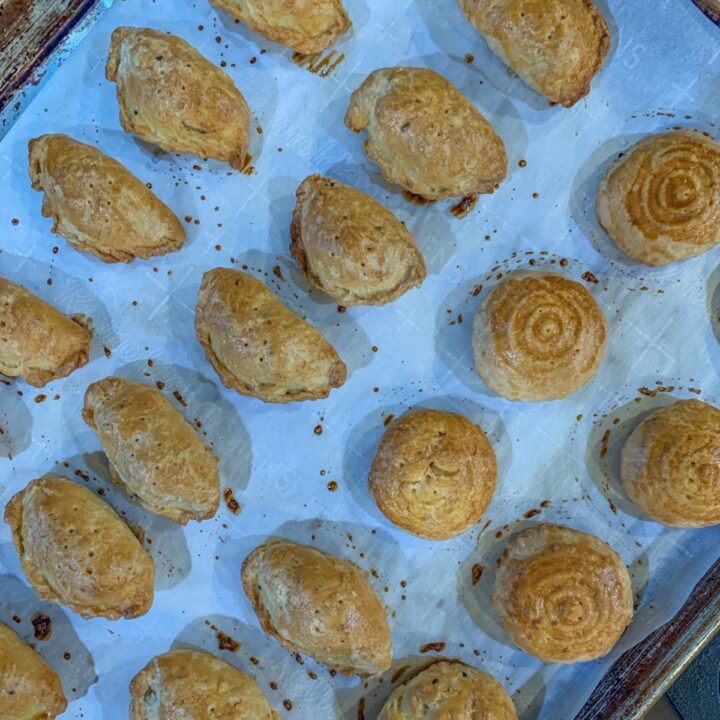
Step 4 | Coconut Kileche Instructions: Use one tablespoon of dough, and flatten it into a circle. Fill with a few teaspoons of coconut and pinch the dough together. With the pinched portion facing up (so that it ends up on the bottom of the cookie) press and flatten into a Maamoul Mold (affiliate link). Flip and tap the mold to dislodge the coconut-filled cookie. If you don't have a mold, just shape it into a circle.
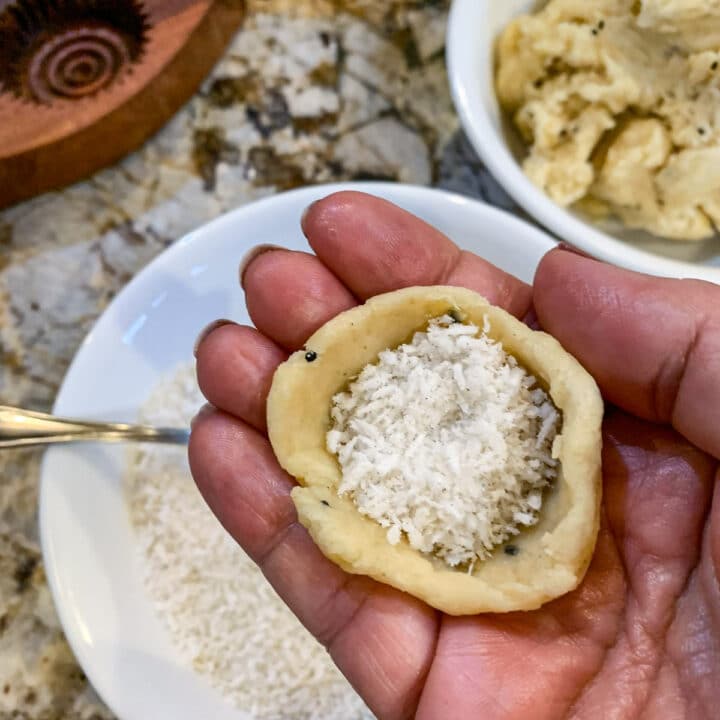
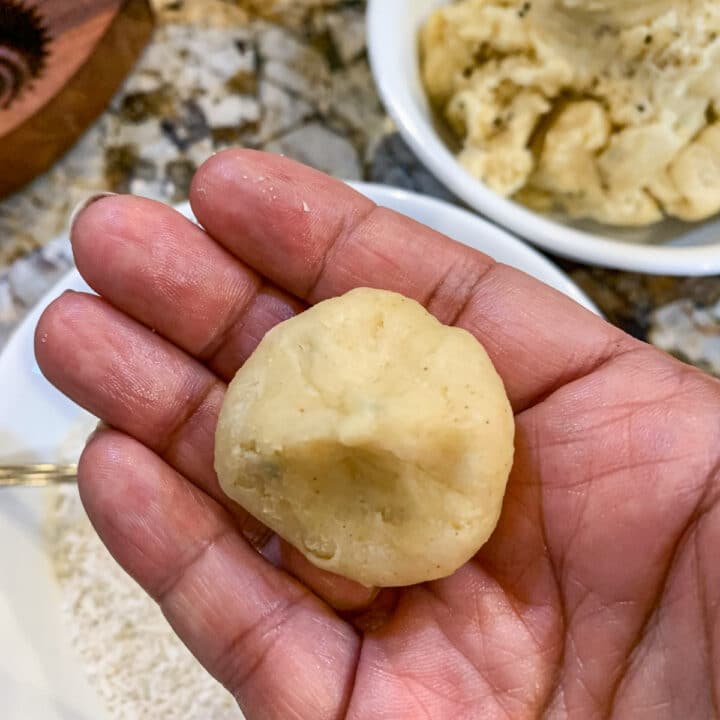
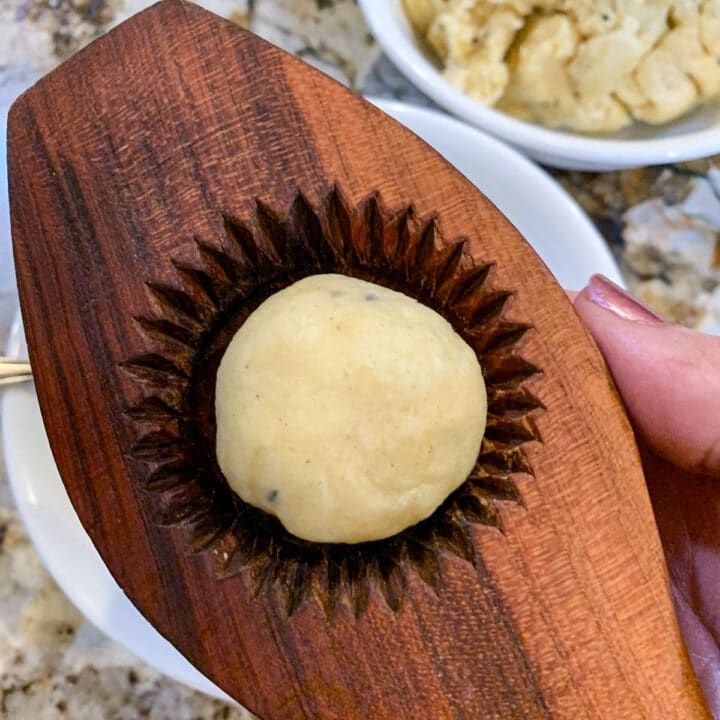
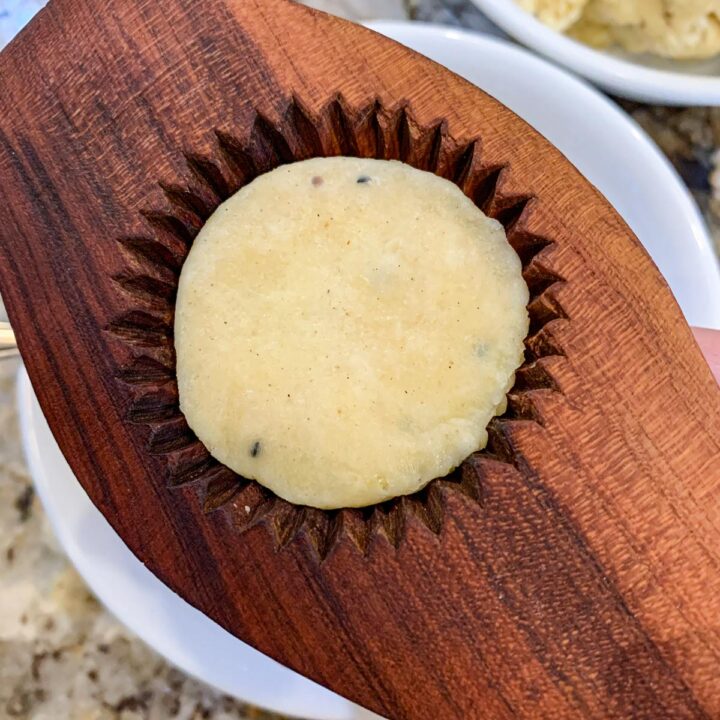
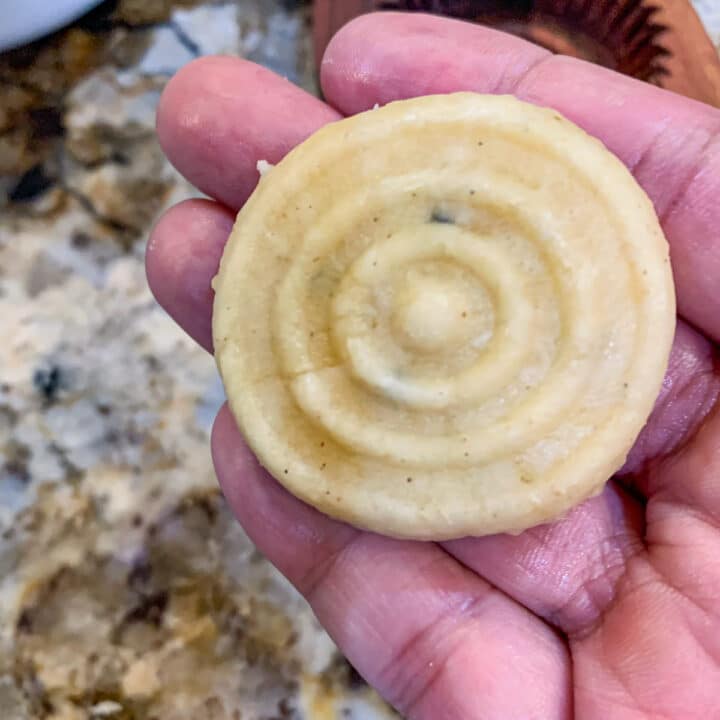
Step 5: Continue until you have used up the coconut filling, glazing, and baking as you go.
How to Make Date Kileche
Step 1: Place half of the date paste onto an approximately 24" piece of waxed paper (shiny side up). Cover with another same-sized sheet (shiny side down). Roll into a thin layer using a rolling pin.
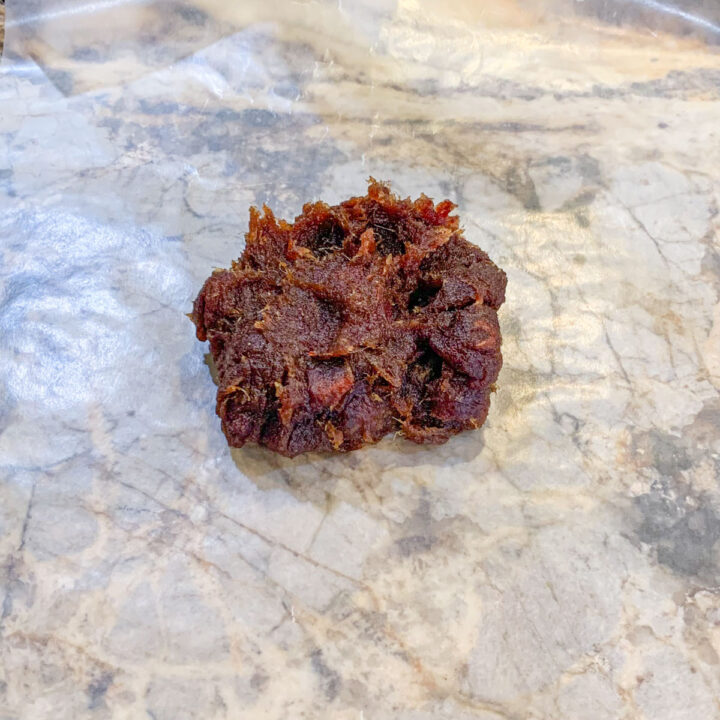
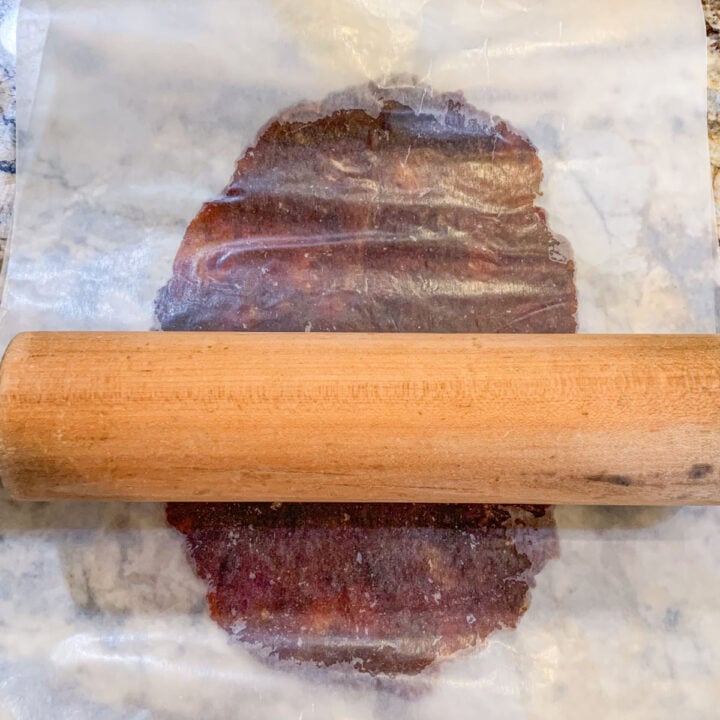
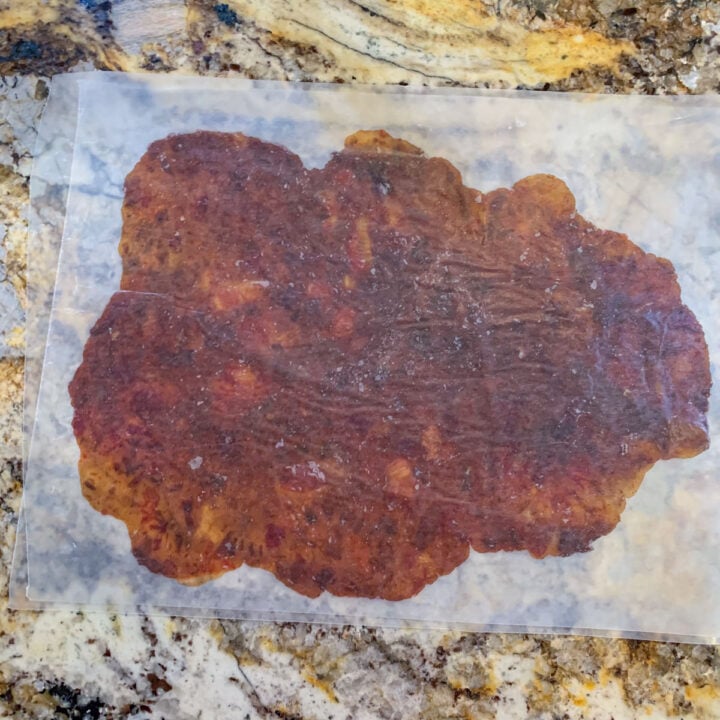
Step 2: Divide the last piece of dough into two sections. Roll one of the pieces into a thin layer, approximately the same size as the date layer or a little bigger.
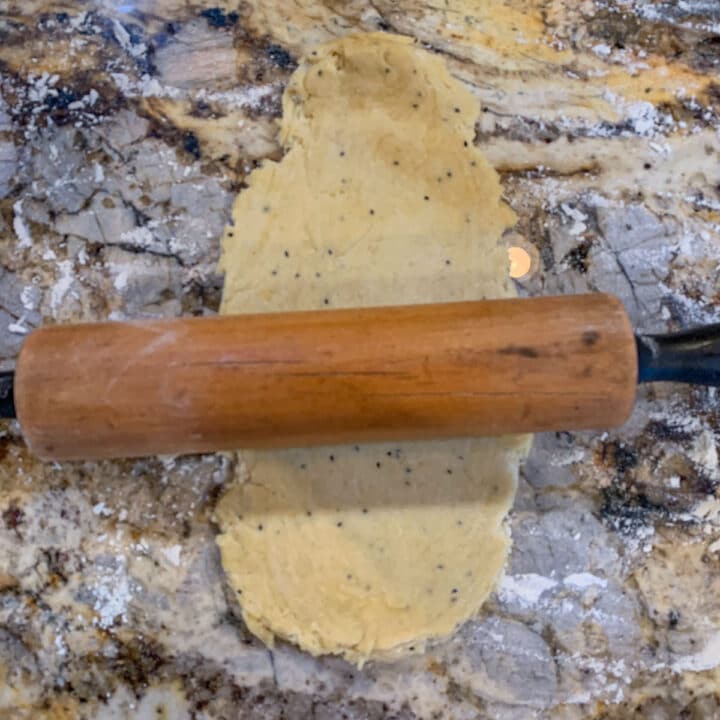
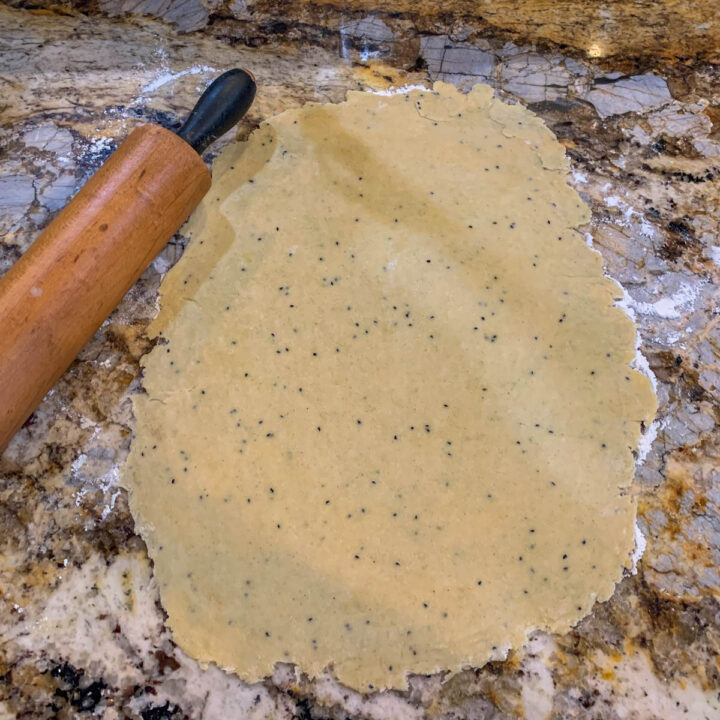
Step 3: Slowly peel back one of the sheets of wax paper. Now flip and press the dates into the dough. Gently peel back the remaining sheet of wax paper.
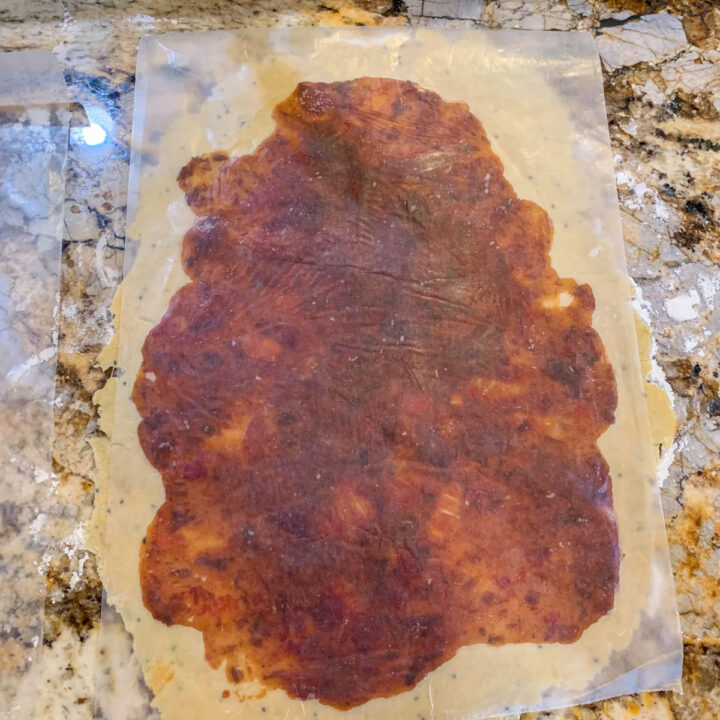
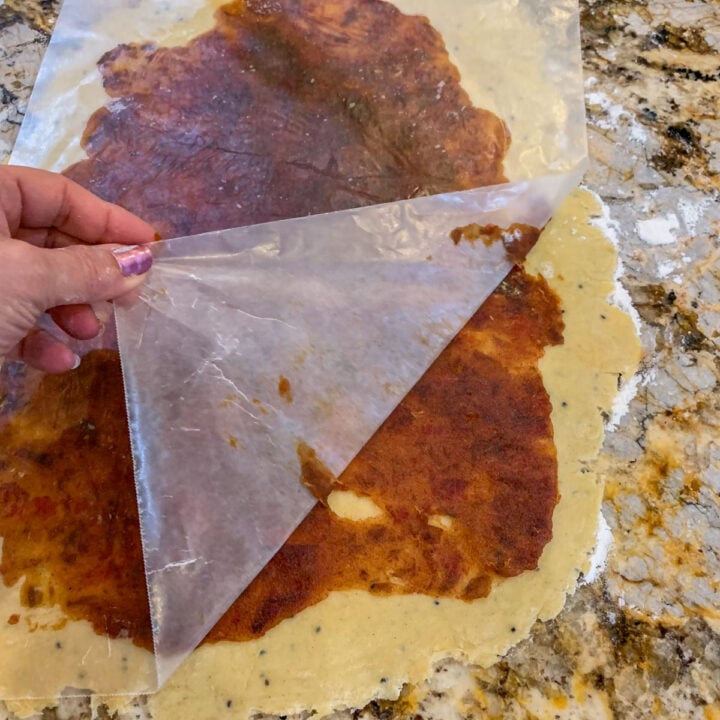
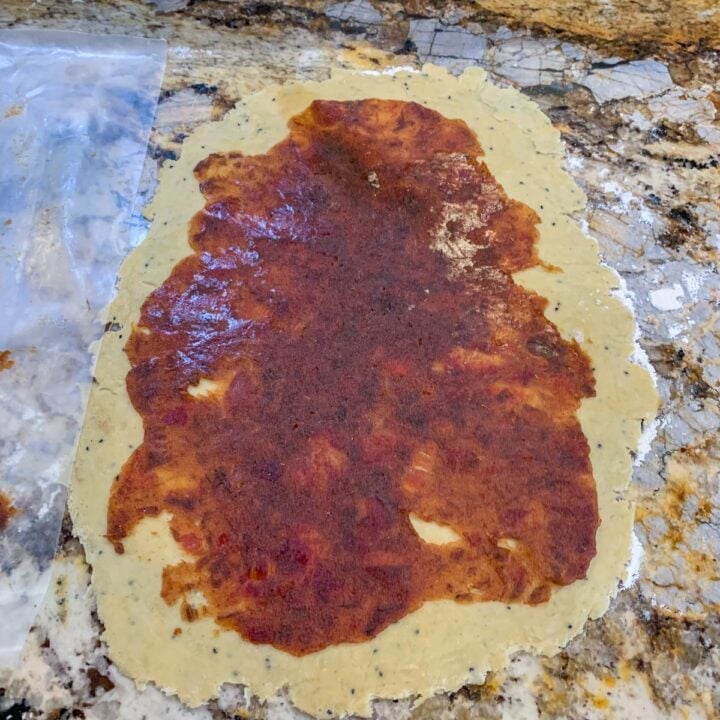
Pro Tip: If some of the date paste sticks to the waxed paper, scrape it off using a spatula and reapply where needed. Trim off excess dough and save to make Kleicha.
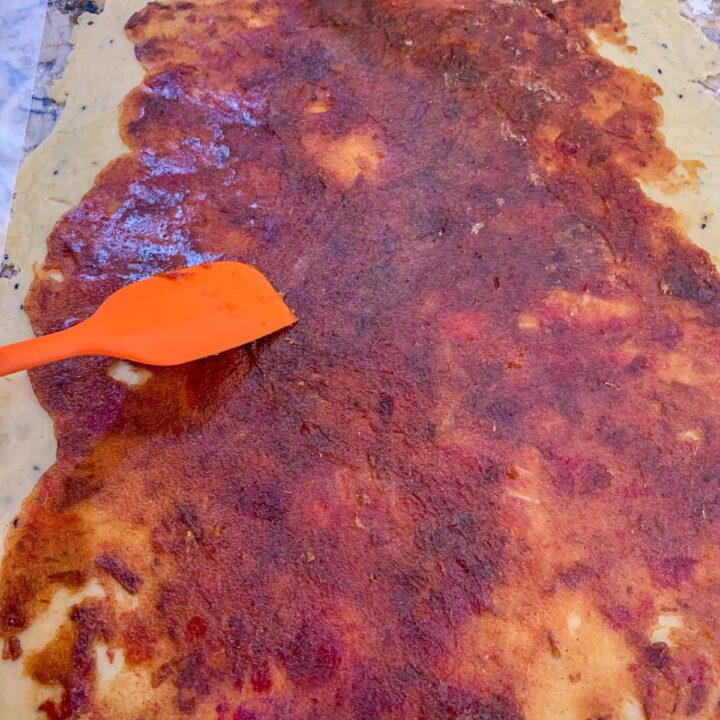
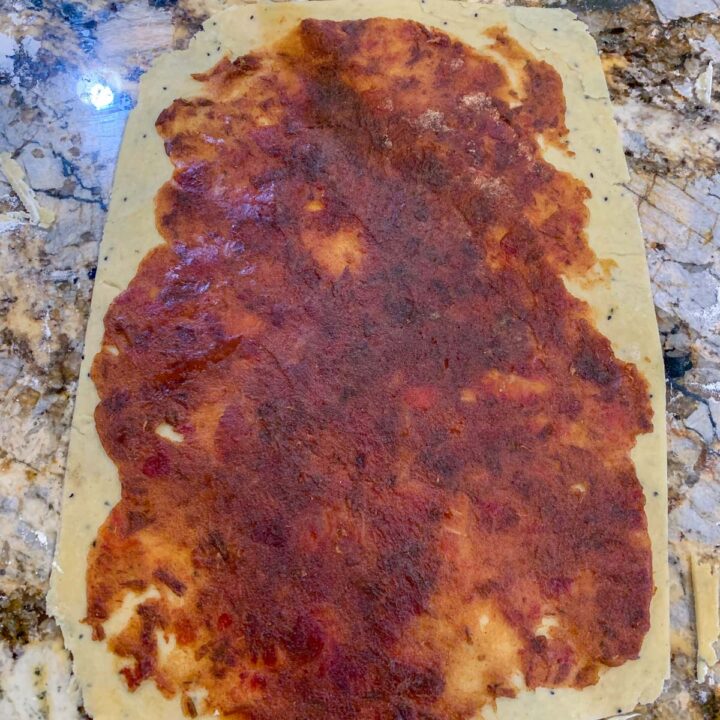
Step 4: Slice dough lengthwise into two sections and roll into two long tubes. Flatten by pressing down gently with your hands. Make sure the sealed side is facing down. Cut into 2" sections with a crinkle cutter or slice with a sharp knife. Pierce, glaze, bake, and repeat.
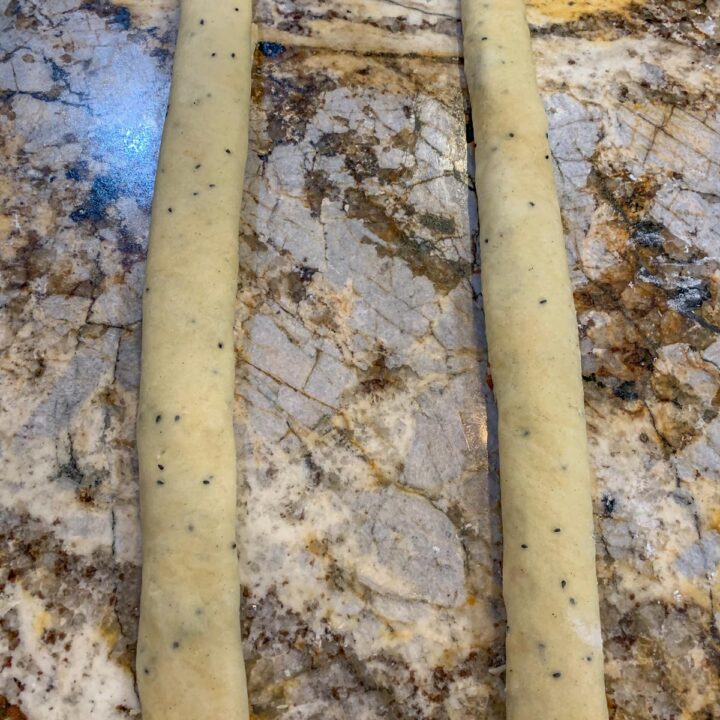
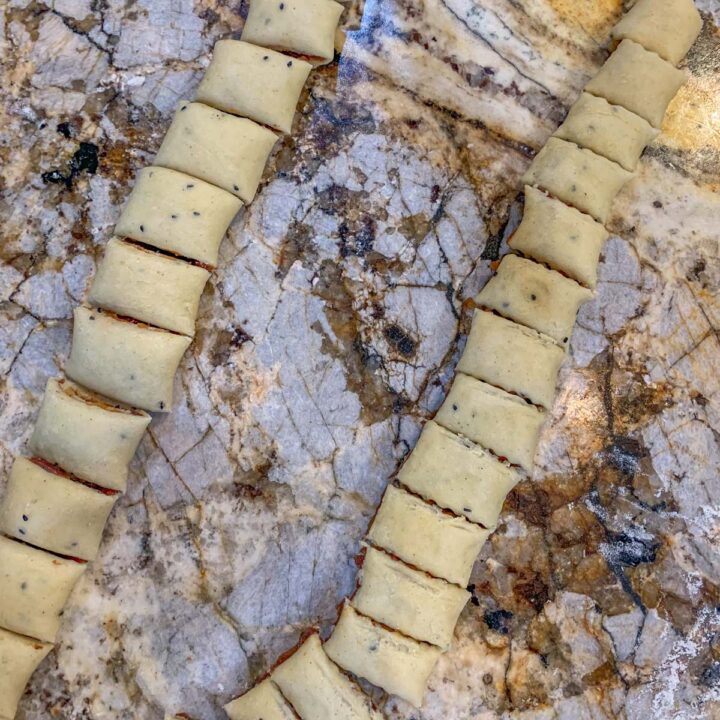
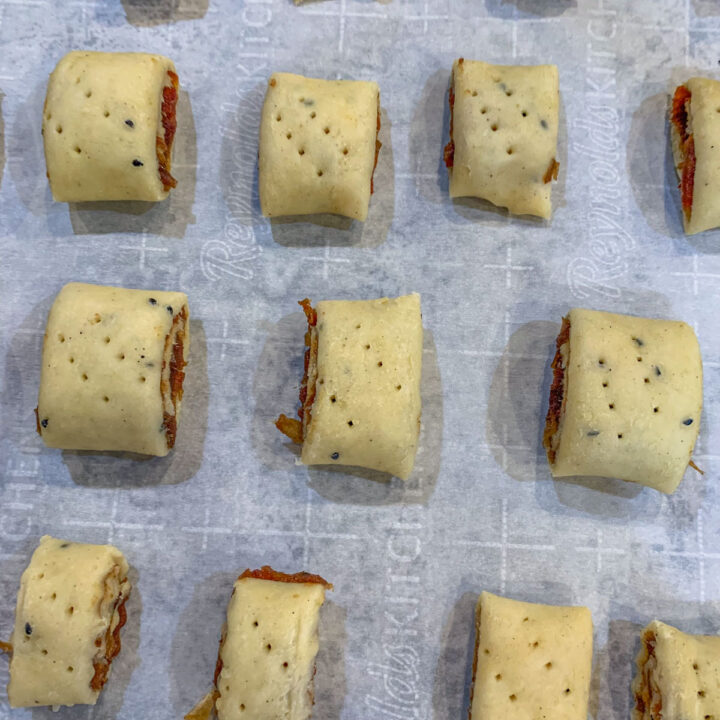
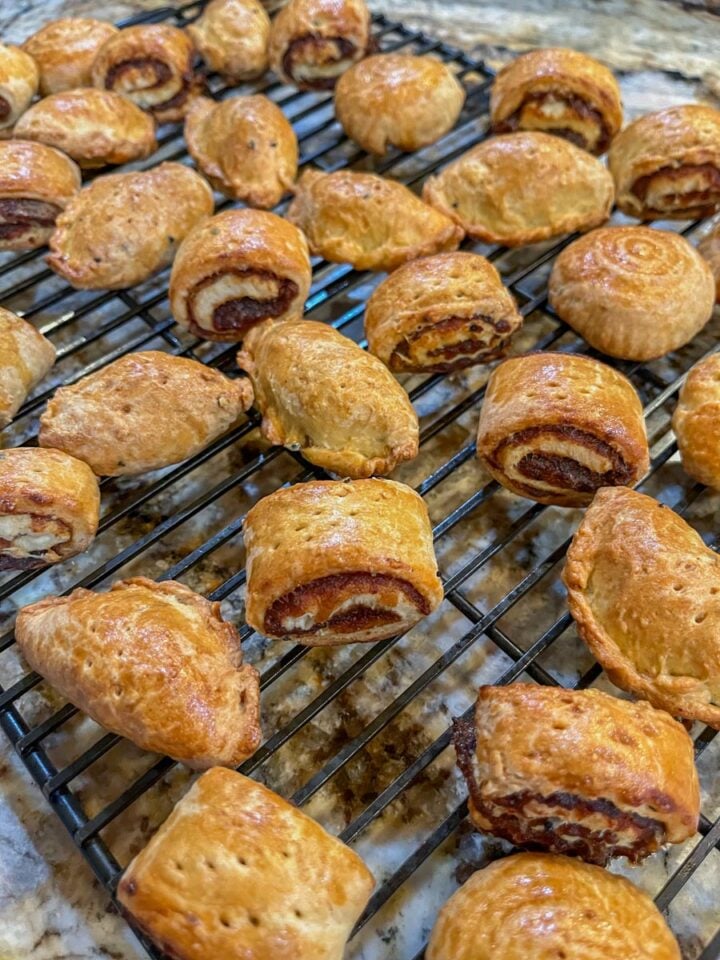
👩🏼🍳 Pro Tips
- Walnut and coconut Kileche are shaped differently to identify what filling is hidden inside.
- If there is extra dough remaining, it's usually rolled into braids or other shapes and baked as is.
- A Maamoul Mold is used to make another Middle Eastern cookie, known as "maamoul." I like to use this awesome mold to form the coconut Kleicha.
- Another fun tool, a Crinkle Cutter can be used to add a decorative edge to the date Kleicha.
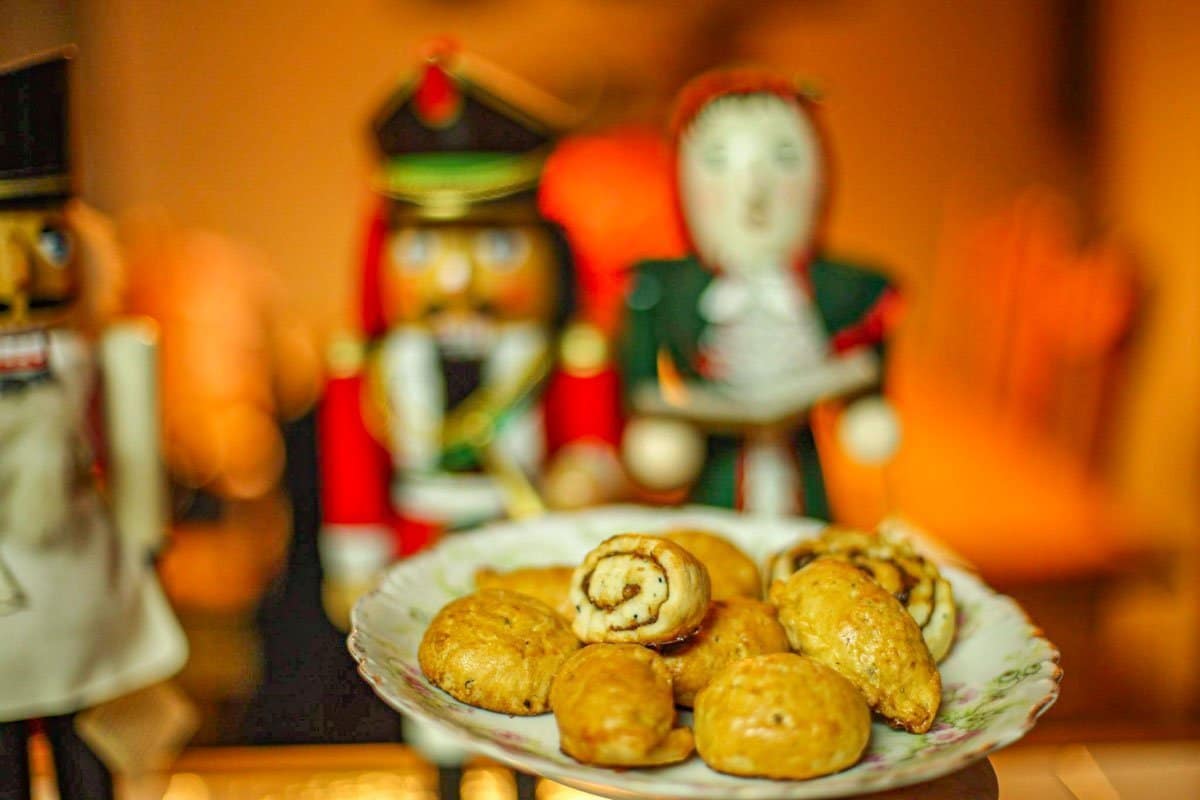
🥮 More Holiday Cookies
📖 Recipe

Assyrian Holiday Cookies (Kileche/Kleicha)
Equipment
Ingredients
Kileche Dough
- 1 tablespoon yeast
- 1 cup warm milk
- ⅓ cup granulated sugar (divided)
- 10 cups all-purpose flour
- 1½ teaspoon salt
- 1 tablespoon cardamom
- 1½ teaspoon nigella sativa seeds
- 2 cups unsalted butter (melted)
- ⅓ cup plain yogurt (room temperature)
- 3 medium eggs (beaten)
Walnut Filling
- 1½ cup ground walnuts
- ⅔ cup granulated sugar (may reduce to ½ cup)
- 1 teaspoon cardamom
Coconut Filling
- 1½ cup unsweetened shredded coconut
- ⅔ cup granulated sugar (may reduce to ½ cup)
- 1 teaspoon ground cardamom
- 1 tablespoon rose water (optional)
Date Filling
- 16 ounce date paste (packaged, or make your own)
- 1 tablespoon vegetable oil
- 1 teaspoon ground cardamom
Glaze
- 2 medium eggs (beaten)
- 2 tablespoon whole milk
Instructions
Prepare the Dough
- Mix yeast into warm milk, then sprinkle with one tablespoon sugar, mix and set aside until foamy.
- Meanwhile, add flour into a large bowl and whisk in the remaining sugar, salt, nigella sativa seeds, and cardamom.
- Stir melted butter, yogurt, eggs, and milk-yeast mixture into the flour until crumbly. knead by hand, until the dough is soft and smooth. Score the dough with a Cross, cover, and allow to rest in a warm place for one hour.
Prepare the Fillings
- While the dough is resting, prepare the fillings. Mix the ground walnuts with the sugar and cardamom. Do the same with the coconut filling ingredients.
- To make the date filling, heat vegetable oil in a small saucepan. Add the date paste and sprinkle with cardamom. Stir and mix, over medium heat, until the date paste is toasted. Frying the dates really brings out their flavor!
Kileche Assembly Instructions
- Preheat oven to 350 degrees F.
- Divide the dough into 3 portions. One portion will be used for each filing. Any extra dough can be rolled into braids and wreaths and baked as is.
- Walnut Kileche Instructions: Take a small portion of dough and roll it into a ball. Flatten using your thumbs and index fingers. Mold the dough into a bowl shape and fill it with a teaspoon or two of walnut filling. Fold the dough in half and press the edges together. Make small folds all around the edges. Continue until all of the dough or filling is used up. Place the cookies on a parchment-covered cookie sheet as you make them.
- Prepare the Glaze: Whisk eggs and milk to make the glaze. Pierce Kileche a few times with a fork and brush generously with glaze. Bake for 30 minutes or until golden brown. Continue with the next filling.
- Coconut Kileche Instructions: Use one tablespoon of dough, flatten it into a circle. Fill with a few teaspoons of coconut and pinch the dough together. With the pinched portion facing up (so that it ends up on the bottom of the cookie) press and flatten into a Maamoul Mold. Flip and tap the mold to dislodge the coconut-filled cookie. If you don't have a mold, just shape it into a circle.
- Continue until you have used up the coconut filling, glazing, and baking as you go.
How To Make Date Kileche
- Place half of the date paste onto an approximately 24" piece of waxed paper (shiny side up). Cover with another same-sized sheet (shiny side down). Roll into a thin layer using a rolling pin.
- Divide the last piece of dough into two sections. Roll one of the pieces into a thin layer, approximately the same size as the date layer or a little bigger.
- Slowly peel back one of the sheets of wax paper. Now flip and press the dates into the dough. Gently peel back the remaining sheet of wax paper.
- Slice dough lengthwise into two sections and roll into two long tubes. Flatten by pressing down gently with your hands. Make sure the sealed side is facing down. Cut into 2" sections with a crinkle cutter or slice with a sharp knife. Pierce, glaze, bake, and repeat.
Notes
- Walnut and coconut Kileche are shaped differently to identify what filling is hidden inside.
- If there is extra dough remaining, it's usually rolled into braids or other shapes and baked as is.
- A Maamoul Mold is used to make another Middle Eastern cookie, known as "maamoul." I like to use this awesome mold to form the coconut Kleicha.
- Another fun tool, a Crinkle Cutter can be used to add a decorative edge to the date Kleicha.

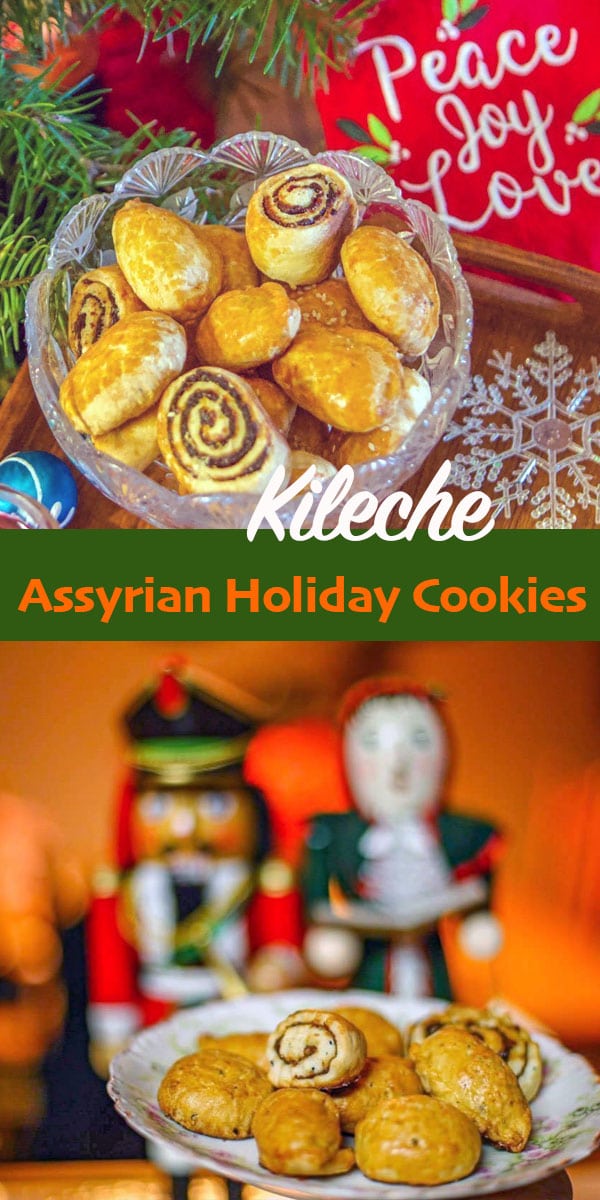

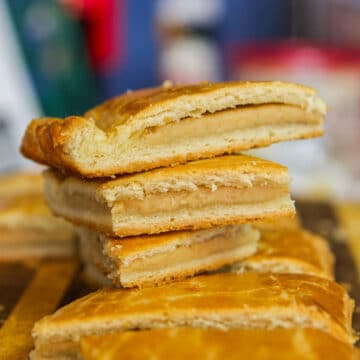
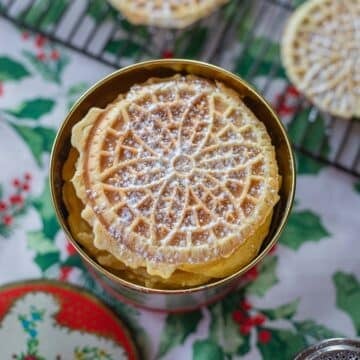
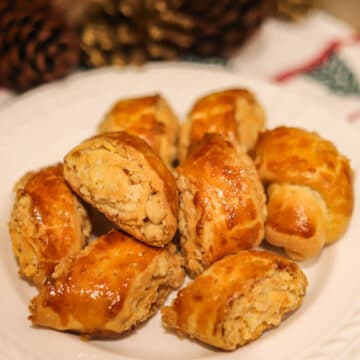
Alice Edlbauer says
Hi Azizta Hilda
Time to make Kileche!🥰
I love making them the way your Mom did, God rest her soul.
They taste just like my Mom’s.
I am always checking your blog, I notice that you changed the measurements for some of the ingredients.
Any reason for the changes?
Hilda Sterner says
Hi Alice, Thank you for your sweet comment! The truth is, I never stop messing with recipes. I tweak them as I go along, so if you like something, you might want to print it! 😉
yvonne says
my dough was very tough and hard to roll out, and they came out not soft, can you tell me what had happened I followed the recipe to the t. wasnt the best recipe
Hilda Sterner says
Hi Yvonne, Sorry to hear that you didn't have success with this recipe. I'm not sure why it was hard to roll, but usually I beak off a small porting of dough and flatten and fill it in my hands, just like mom did. I only roll the date ones, I'm not sure if that's what you're referring to? Regarding the texture, again that's how my mom made them, a little on the crumbly side, which I prefer over soft kileche. Microwaving them will make them softer, if you prefer that texture, or perhaps try another recipe? I haven't tried this one myself, but this is where I would start. https://www.youtube.com/watch?v=JZ6wgpy18J8&list=PLS_rhdSE0w_CDMaUBDm8ahHBO7-7gw49x Take care and thanks for your feedback!
Zsuzsa says
Hi Hilda,
Would it be possible to detail the ingredients using grams? IT always ends in disaster when I try to decipher the cup. What is the weight of a cup of flour, butter, etc please? I would really appreciate your help, thank you, Zsuzsa
Hilda Sterner says
Hi, Unfortunately, unless I recreate the recipe, I can't give the accurate measurements in grams. Here's a link to a conversion calculator that you can try. You can choose the ingredient and amount in US measurements and it will convert it for you into grams. I hope it helps! https://www.thecalculatorsite.com/cooking/cups-grams.php
Zsuzsa says
Thank you, I will definitely try using this calculator. I recently went to Egypt and bought something called ara'eesh that looks EXACTLY like this date filled kleicha, so I am very excited to try and bake it!!!!
Hilda Sterner says
You'll have to let me know if they taste the same, good luck!
Marina says
Thank you so much for posting this recipe. My Assyrian Nana, who was my favorite person in the world, passed away last November . She wasn't religious but being Assyrian, celebrating Easter still meant a lot to her. My way of celebrating this year was to bake these based on your recipe (we used to make Chadeh together a lot, but it's not my favorite thing, so did these instead), and they came out lovely. They still have that simple, old world, wholesome flavor but with those delicious spices and aromas from the cardamom and rose water. Thank you for sharing this. I wish I could post a photo cause they came out beautiful even though I'm not the most elegant baker.
Hilda Sterner says
Thank you so much Marina, and sorry for your loss! Your grandmother sounds wonderful! I'm glad the Kileche recipe worked for you, naneelakh. I'd love to see a pic. You can post it on social media and tag me in it if you'd like, or post it on my hildaskitchenblog group on FB. FYI, I will have to approve the post. Happy Easter!